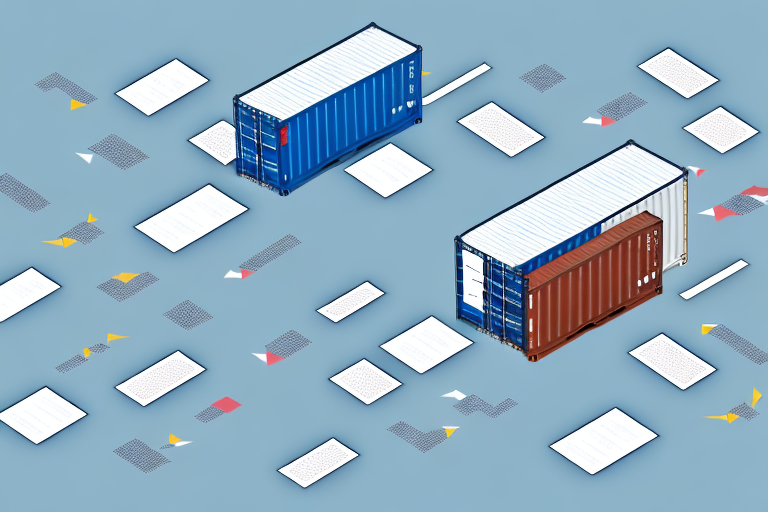Comparing Data Elements When Choosing Between Shipping Software
In today's fast-paced business environment, selecting the right shipping software is crucial for the growth and success of your business. With numerous options available, it's essential to understand the key factors when evaluating shipping software to ensure you make the best choice.
Introduction: The Importance of Choosing the Right Shipping Software
Shipping software is designed to streamline your shipping process by automating tasks such as label creation, carrier selection, tracking, and notifications. Utilizing shipping software can help you save time and money by enabling you to compare shipping rates and carriers, improve shipping accuracy, and enhance customer satisfaction with real-time tracking and notifications.
However, not all shipping software is created equal. It's important to select software that meets your business needs and integrates seamlessly with your existing systems. Some solutions may offer limited carrier options or lack essential features like batch processing or international shipping capabilities. Choosing the wrong software can lead to inefficiencies, errors, and ultimately, dissatisfied customers. Therefore, thorough research is crucial to select shipping software that aligns with your business requirements and budget.
Key Considerations When Choosing Shipping Software
Integration with E-Commerce Platforms
Evaluate the software's ability to integrate with your existing e-commerce platform or marketplace. Seamless integration ensures smooth order management, label generation, and shipment tracking.
User-Friendly Interface
A user-friendly interface is vital for creating, managing, and tracking shipments efficiently. Look for intuitive dashboards and easy navigation to minimize the learning curve for your team.
Cost and Scalability
Consider the software's cost relative to its features and your budget. Additionally, assess its scalability to accommodate your business growth and increasing shipping volumes.
International Shipping Capabilities
If your business operates globally, ensure the software can handle international shipping, including customs declarations, duties, taxes, and compliance with regional regulations.
Real-Time Tracking and Notifications
Real-time tracking and delivery updates enhance customer satisfaction by keeping them informed about their shipment status. This feature also reduces inquiries to your customer service team.
Additional Features
Explore additional features such as automated label printing, pickup scheduling with carriers, and advanced reporting and analytics to optimize your shipping processes.
Understanding the Data Elements in Shipping Software
Carrier Rates and Options
Analyze carrier rates to ensure cost-effectiveness. Compare different carriers to find the best rates and services that match your shipping needs.
Shipping Volume and Frequency
Assess your shipping volume and frequency to ensure the software can handle bulk shipments and high-frequency orders without compromising accuracy and efficiency.
Tracking and Notification Features
Effective tracking and notification systems provide transparency and improve the overall customer experience by keeping them informed about their orders.
Integration Capabilities
Ensure the software integrates with your existing e-commerce platform, inventory management, and accounting systems to streamline operations and reduce data entry errors.
Comparing Shipping Rates and Carriers Across Different Software
Comparing shipping rates and carriers is a critical factor in selecting shipping software. Many options allow you to compare rates from multiple carriers, enabling you to choose the most cost-effective solution.
Additionally, evaluate each carrier's shipping capabilities, such as delivery times, tracking accuracy, and special services like Saturday delivery or hazardous material handling. This ensures you select carriers that meet your specific business needs.
For seamless integration, opt for software that works well with popular e-commerce platforms like Shopify or WooCommerce. Advanced reporting and analytics features can provide valuable insights into shipping costs and performance, helping you optimize your shipping strategy and improve your bottom line.
Analyzing Shipping Volume and Frequency with Different Software
Shipping volume and frequency are essential considerations when evaluating shipping software. Depending on your business, you may need software that can handle bulk shipping labels or manage high-frequency shipments efficiently.
Look for software that offers detailed reports and analytics to identify trends in your shipping patterns. Customizable reporting options and real-time data updates can help you make informed decisions to optimize your shipping processes.
Integration with other systems, such as your e-commerce platform, can further streamline order fulfillment and reduce the risk of errors or delays, ensuring a smooth shipping operation.
Evaluating Shipping Tracking and Notification Features
Robust tracking and notification features are essential for keeping customers informed about their shipment status. Real-time tracking ensures customers receive timely updates on delivery times and any changes to their orders.
Customization options allow you to personalize notifications with your company's branding or include tailored messages, enhancing the customer experience and fostering brand loyalty.
Assessing International Shipping Capabilities
For businesses operating globally, it's crucial to evaluate the software's international shipping capabilities. This includes handling customs declarations, calculating duties and taxes, and complying with specific regulations for different countries.
Ensure the software integrates with various carriers and shipping methods to expand your reach and provide reliable service to international customers. Additionally, robust tracking and reporting capabilities are vital for monitoring international shipments and providing accurate delivery estimates.
Understanding Integrations with E-Commerce Platforms and Marketplaces
Integrating your shipping software with your e-commerce platform or marketplace can automate many aspects of the shipping process, saving time and reducing errors. Look for software that supports seamless integration, enabling you to manage orders, generate shipping labels, and track shipments from a single interface.
Integration also provides valuable data insights, such as shipping and delivery times, which can help you identify areas for improvement and optimize your shipping strategy. This data can inform decisions related to inventory management and product pricing, further enhancing your business operations.
Weighing Customer Support and User Experience Across Different Software
When evaluating shipping software options, consider the level of customer support and the overall user experience. Comprehensive training and support resources, including documentation, video tutorials, and live support, are essential for smooth onboarding and troubleshooting.
A user-friendly interface ensures that your team can efficiently navigate the software, minimizing downtime and maximizing productivity. Positive user experiences and reliable customer support contribute to the software's effectiveness and your business's success.
Case Studies: Real-World Examples of Choosing Between Shipping Software
Reviewing case studies is an excellent way to gain insights into how businesses have selected and implemented shipping software solutions. Look for examples of companies similar in size and shipping needs to yours, and analyze their decision-making process.
Case studies can highlight the importance of customization options and the level of customer support provided by different software providers. Understanding how other businesses have navigated these factors can inform your own selection process and help you choose a solution that best fits your unique needs.
Conclusion: Making an Informed Decision When Choosing Shipping Software
Choosing the right shipping software can significantly impact your business's success. By evaluating key data elements, comparing rates and carriers, and considering international shipping capabilities, user experience, and customer support, you can make an informed decision that streamlines your shipping process, saves time and money, and enhances customer satisfaction.
Remember to review case studies and real-world examples to gain insights into how businesses like yours have selected shipping software options. Additionally, consider the level of automation the software offers to further optimize your operations, and ensure the solution is scalable to accommodate your business's growth.
Additional Considerations
- Automation: Automated shipping software can save time and reduce errors by generating shipping labels, tracking numbers, and customs documents automatically.
- Scalability: Choose software that can adapt to your business growth, offering flexible pricing plans and accommodating increasing shipment volumes without compromising performance.
Industry Insights
According to a Business Insider report, the global shipping software market is expected to grow significantly, driven by increasing e-commerce activities and the need for efficient logistics solutions. Staying informed about industry trends can help you select a shipping software that remains relevant and effective as the market evolves.
Expert Recommendations
Experts recommend prioritizing shipping software that offers comprehensive features, reliable customer support, and robust integration capabilities. According to a Forbes Tech Council, the top shipping software solutions provide a balance of cost-effectiveness, scalability, and user-friendly interfaces, making them suitable for businesses of all sizes.




















